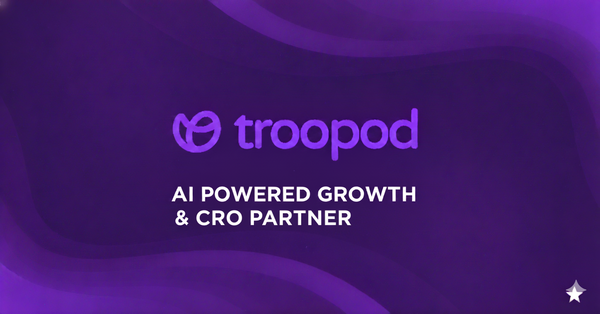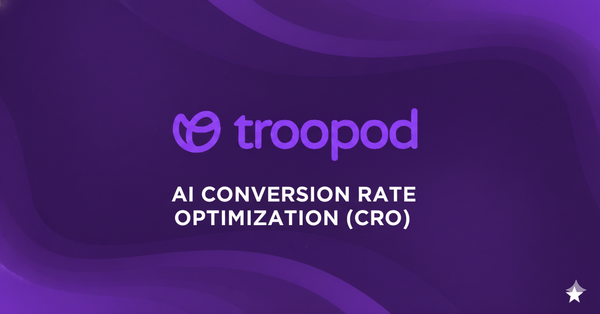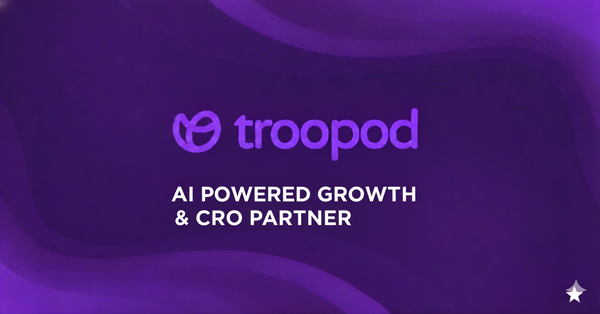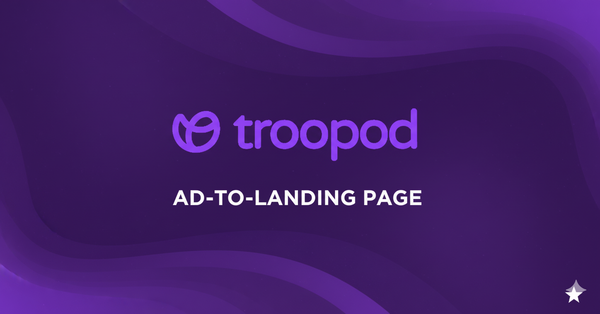The Broken Bridge: Why 72% of Paid Clicks Die Between Ad and Landing Page
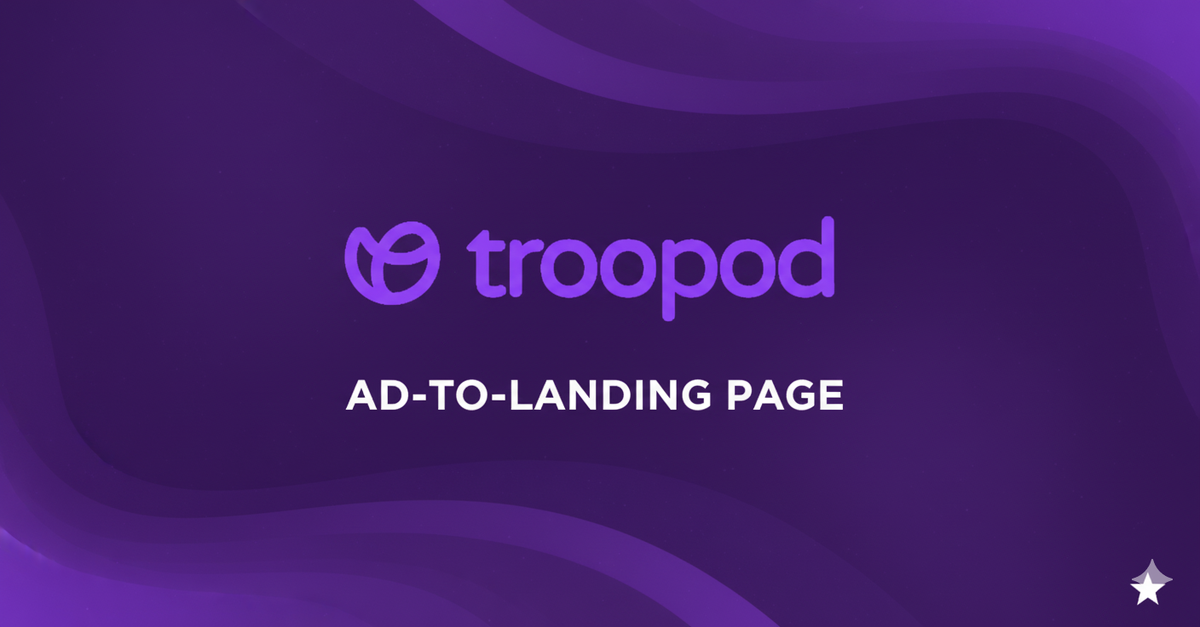
The ₹6.4 Lakh Monthly Leak Nobody's Tracking
A Mumbai-based fashion brand spends ₹8.9 lakhs monthly on Meta ads. Their campaigns are performing well:
- CTR: 3.4% (above industry average)
- CPM: ₹340 (competitive)
- Cost per click: ₹22 (reasonable)
- Monthly clicks: 40,455
Everything looks healthy in Ads Manager.
Then you check Analytics:
- Bounce rate: 68%
- Time on page: 12 seconds
- Pages per session: 1.2
- Conversion rate: 0.9%
What happened between the click and the landing?
The bridge broke.
40,455 people clicked. 27,509 bounced within 15 seconds. They paid ₹22 for each of those clicks.
That's ₹6,05,198 spent on traffic that never had a chance to convert.
Not because the product was wrong. Not because the price was too high. Not because the checkout was broken.
Because the ad promised one thing and the landing page delivered something else.
The Invisible Conversion Killer
Most brands obsess over:
- Ad creative (testing dozens of variations)
- Targeting (refining audiences constantly)
- Ad copy (A/B testing every word)
- Bidding strategy (optimizing for conversions)
They spend weeks perfecting the ad. They track CTR, CPM, frequency, relevance score.
Then they send all that traffic to a generic homepage or product page that was "optimized" through traditional CRO three months ago.
The disconnect:
Your ad team works independently from your conversion team. Ad team focuses on clicks. Conversion team focuses on landing pages. Nobody owns the bridge between them.
Result: A beautiful ad leading to a mismatched page. The most expensive leak in digital marketing.
What Actually Happens in Those 12 Seconds
Track a visitor's journey:
Second 1-3: The Confusion Check
They land. Their brain instantly scans for confirmation they're in the right place.
Questions firing unconsciously:
- Is this what I clicked for?
- Do I see the same product/benefit?
- Does the visual style match?
If yes → They scroll. If no → Back button.
Bangalore electronics brand example:
Ad promise: "Gaming laptop with RTX 4070 - ₹89,999 limited stock"
Landing page: Homepage with rotating banner showing multiple products. Gaming laptop mentioned fourth slide. No RTX 4070 visible. No ₹89,999 pricing.
Bounce rate from that ad: 79%
Time on page: 8 seconds
They didn't bounce because they weren't interested. They bounced because they couldn't find what they clicked for.
Second 4-8: The Trust Scan
If they survived the confusion check, they're now scanning for trust signals.
Their brain asks:
- Are there reviews?
- Do other people buy this?
- Is there proof this works?
- What's the guarantee?
If these aren't immediately visible → Doubt creeps in → Back button.
Delhi beauty brand example:
Ad emphasized: "Trusted by 50,000+ customers - 4.8★ rated"
Landing page: Reviews section existed but was buried at bottom. Above fold showed only product images and technical specs.
Bounce rate: 71%
Adjusted version pushed reviews above fold matching ad's trust emphasis.
New bounce rate: 43%
Same page. Same product. Just aligned the trust signals with ad promise.
Second 9-12: The Action Decision
If they made it this far, they're deciding whether to engage deeper or leave.
Their brain evaluates:
- Is the next step clear?
- Does it match what I expected?
- Is this worth my time?
Misaligned CTA → Cognitive load → Back button.
Pune home decor brand example:
Ad CTA: "Shop Diwali Collection"
Landing page CTA: "Explore Our Range"
Seems minor? Bounce rate dropped 18% when they changed landing page CTA to "Shop Diwali Collection."
Why? Eliminated micro-confusion. Brain got exactly what it expected.
The 7 Bridge Breakers That Kill 72% of Clicks
Bridge Breaker #1: Visual Mismatch
The problem: Ad shows product in lifestyle setting with warm, natural lighting. Landing page shows same product on white background with clinical photography.
Visitor's unconscious reaction: "This doesn't look the same. Did I click wrong?"
Mumbai fashion brand data:
Campaign A: Ad and landing page visual consistency
- Bounce rate: 47%
Campaign B: Different visual style between ad and page
- Bounce rate: 71%
Same product. Same price. Same offer. Visual mismatch cost 24% more bounces.
Bridge Breaker #2: Promise Disappearance
The problem: Ad makes specific promise. Landing page buries it or changes language.
Ad: "Free shipping on orders above ₹999"
Landing page: Free shipping mentioned in footer fine print. Not visible above fold.
Visitor's thought process: "Wait, where's the free shipping they mentioned? Did I misread?"
Indore apparel brand fix:
Before: Free shipping in footer
- Orders with ₹999+ cart value: 34% of total
After: Free shipping banner matching ad above fold
- Orders with ₹999+ cart value: 52% of total
18% increase just from surfacing the promise they already made in the ad.
Bridge Breaker #3: Tone Shift
The problem: Ad speaks casually and emotionally. Landing page is formal and feature-focused.
Ad tone: "Finally, skincare that actually gets you. No BS ingredients, just stuff that works."
Landing page tone: "Our dermatologically-tested formulation utilizes clinically-proven active compounds to optimize skin health outcomes."
Same brand. Completely different voice.
Visitor feels: "This doesn't sound like the same company. Where's the brand I connected with?"
Bangalore beauty brand A/B test:
Version A (formal tone on landing page): 2.1% conversion Version B (matching ad's casual tone): 3.4% conversion
62% conversion increase from tonal alignment alone.
Bridge Breaker #4: Cognitive Overload
The problem: Ad focused on one specific benefit. Landing page throws 15 different benefits at once.
Ad: "Sleep better in 7 days with our magnesium supplement"
Landing page: Lists 12 different benefits (sleep, stress, muscle recovery, heart health, bone density, etc.)
Visitor thinks: "Wait, what is this actually for? I just wanted better sleep."
Paradox of choice applied to benefits:
Too many claims = None feel credible Focused claim = Believable and actionable
Chennai supplement brand test:
Landing page version 1: Listed all 12 benefits
- Conversion: 1.7%
Landing page version 2: Focused only on sleep benefit from ad
- Conversion: 3.2%
88% improvement from narrowing focus to match ad promise.
Bridge Breaker #5: Friction Mismatch
The problem: Ad suggests quick, easy action. Landing page requires complex steps.
Ad: "Get your personalized meal plan in 2 minutes"
Landing page: 15-question quiz before showing anything. No indication of progress. No preview of what they'll get.
Visitor frustration: "Two minutes? This is taking forever. What am I even signing up for?"
Pune fitness brand adjustment:
Original: 15 questions, no preview
- Quiz completion rate: 28%
Optimized: 5 questions, preview of meal plan shown upfront, progress bar
- Quiz completion rate: 64%
129% improvement in completion from reducing friction and setting expectations.
Bridge Breaker #6: Mobile-Desktop Disconnect
The problem: Ad runs primarily on mobile (78% of traffic). Landing page was optimized for desktop.
What happens on mobile:
- Hero image crops weirdly
- Text too small to read
- CTA button half-visible
- Load time 4.2 seconds (desktop: 1.8s)
Delhi electronics brand mobile analysis:
Desktop bounce rate: 51% Mobile bounce rate: 73%
Mobile conversion rate: 0.8% (vs desktop 2.3%)
After mobile-specific optimization matching mobile ad format:
- Mobile bounce rate: 54%
- Mobile conversion rate: 1.9%
138% mobile conversion improvement.
Bridge Breaker #7: Expectation Violation
The problem: Ad sets specific expectation about what happens next. Landing page violates it.
Ad: "Click to see our Diwali sale prices"
Landing page: Regular pricing. Sale banner in sidebar. Discount code hidden in popup that appears 30 seconds later.
Visitor reaction: "Where are the sale prices they mentioned? Is this even the sale?"
Bangalore home goods brand test:
Version A: Sale prices not immediately visible
- Bounce rate: 69%
- Conversion: 1.4%
Version B: Sale prices prominent above fold, matching ad promise
- Bounce rate: 46%
- Conversion: 2.8%
100% conversion increase from expectation alignment.
The Real Cost of Bridge Breaking
Let's calculate what the broken bridge actually costs:
Scenario: Mid-sized D2C brand
Monthly ad spend: ₹10 lakhs Average CPC: ₹20 Monthly clicks: 50,000 Bounce rate: 72% Bounced visitors: 36,000
Cost of bounced traffic: ₹7,20,000 monthly
That's ₹86.4 lakhs annually spent on traffic that never engaged.
But it gets worse.
Opportunity cost calculation:
Current scenario:
- 50,000 clicks → 14,000 engaged visitors (28%)
- Conversion rate: 2.2%
- Monthly orders: 308
- AOV: ₹2,400
- Monthly revenue: ₹7,39,200
If bridge was fixed (bounce rate: 45% instead of 72%):
- 50,000 clicks → 27,500 engaged visitors (55%)
- Conversion rate: 2.8% (improves with better-aligned traffic)
- Monthly orders: 770
- AOV: ₹2,400
- Monthly revenue: ₹18,48,000
Revenue difference: ₹11,08,800 monthly
Annual opportunity cost: ₹1.33 crores
Same ad spend. Same product. Same team.
Just fixing the bridge between ad and landing page.
How Brands Accidentally Break the Bridge
It's rarely intentional. Here's how it happens:
Organizational silos:
Performance marketing team: Focused on CPAs, running ads independently Conversion optimization team: Focused on landing page testing independently Product team: Managing homepage updates independently
Nobody owns the connection between them.
The approval chain:
New ad campaign launches → Creative approved by marketing Landing page was optimized 3 months ago → Still using that version Nobody checks if the new ad aligns with the existing landing page
Bridge breaks by default.
The "optimization" trap:
Landing page gets optimized through A/B testing. Winning version converts at 2.7% vs 2.4%.
Declared success. Implemented for all traffic.
But that test included traffic from 40 different ads with 40 different promises. The "winning" version is optimized for average, meaning it's sub-optimal for everyone.
The scale problem:
Brand starts with 5 ads → Easy to manually align landing pages
Brand scales to 50 ads → Manually creating 50 landing pages is impractical
Default solution: Send all to homepage
Bridge breaks at scale.
The Fix: Dynamic Bridge Building
Traditional solution: Manually create custom landing pages for each ad.
Why it fails:
- Takes 4-6 weeks to build 20 landing pages
- Costs ₹8-15 lakhs
- Becomes outdated as soon as ads change
- Can't scale beyond 20-30 ads
Modern solution: AI-powered dynamic alignment
AI reads each ad, identifies:
- Core promise
- Emotional tone
- Visual style
- Target audience context
- Expected next step
Then generates landing page variation that:
- Echoes the exact promise above fold
- Matches emotional tone
- Uses consistent visual style
- Surfaces relevant trust signals
- Provides expected CTA
Implementation reality:
Brand running 60 ads:
Traditional approach:
- 60 custom landing pages
- 12 weeks to build
- ₹18 lakhs investment
- Maintenance nightmare
AI approach:
- Paste URL + connect Meta ads
- AI syncs all campaigns
- 60 personalized variations generated
- 2 minutes per variation
- Automatic updates when ads change
Measuring Bridge Health
Stop tracking just bounce rate. Track these:
Ad-to-page alignment score:
For each ad, measure:
- Visual consistency (0-100)
- Message match (0-100)
- Tone alignment (0-100)
- CTA consistency (0-100)
Average = Bridge health score
Aim for 80+. Below 60 = broken bridge.
Engagement velocity:
Time from landing to first meaningful interaction:
- Scroll
- Click
- Form start
- Add to cart
Fast engagement = Strong bridge Slow engagement = Shaky bridge No engagement = Broken bridge
Segment-specific bounce rates:
Don't just track overall bounce rate. Track by:
- Ad campaign
- Ad creative
- Ad copy variant
- Traffic source
- Device type
High variance = Bridge breaking for specific segments
Conversion path consistency:
Track visitors who convert. Map their journey:
- Which ad they clicked
- Time on landing page
- Pages visited
- Actions taken
Pattern emerges: High-converting visitors all experienced strong ad-to-page alignment.
The Bottom Line: Fix the Bridge
You're spending lakhs on driving traffic.
Your ads are working. People are clicking.
But 72% disappear in the first 12 seconds because the bridge breaks.
Not because they weren't interested. Not because they couldn't afford it. Not because the product was wrong.
Because what they clicked for isn't what they found.
That's not a traffic problem. That's not a conversion problem. That's not a product problem.
It's a bridge problem.
And unlike traffic or conversion optimization, fixing the bridge has immediate impact.
No lengthy A/B tests. No complex funnels. No technical overhauls.
Just align what the ad promises with what the page delivers.
Stop losing 72% of paid clicks to a broken bridge.
Build a bridge that holds.
Related Reading from Troopod
The AI CRO Revolution: Why Traditional A/B Testing is Dead in 2025
Discover why AI-powered conversion optimization delivers 3-8x better results in 70-85% less time than traditional testing—and how Indian D2C brands are achieving conversion rates that were impossible just 18 months ago.
The Conversion Leak Audit: Where 73% of Your Traffic Disappears Before Checkout
A comprehensive guide to identifying the seven invisible leaks costing brands ₹8.4 crores annually—including the ad-to-page disconnect that kills conversions before they start.
First-Time vs Returning Visitor Personalization: The 2-Experience Strategy Driving 340% Revenue Growth
Learn why showing the same homepage to strangers and loyal customers costs ₹3.8 crores—and how personalized experiences for different visitor segments can triple your revenue.
Stop Losing ₹7+ Lakhs Monthly to a Broken Bridge
See exactly where your ad-to-page disconnect is costing you conversions.
Troopod analyzes your ads and landing pages in under 2 minutes and shows you:
- Which ads have the biggest alignment gaps
- Exactly what promise disappeared between click and landing
- A personalized page version that fixes the disconnect
- Projected conversion improvement from alignment
Book a demo and we'll audit one of your campaigns live — so you can see the broken bridge (and how to fix it) in real-time.
No lengthy onboarding. No technical setup. Just paste your URL, connect your ads, and see the gap in 2 minutes.
Want to see where your bridge is breaking? Troopod analyzes your ads and landing pages, identifies exactly where the disconnect happens, and shows you the aligned version. Takes less than two minutes to see what you're losing.


